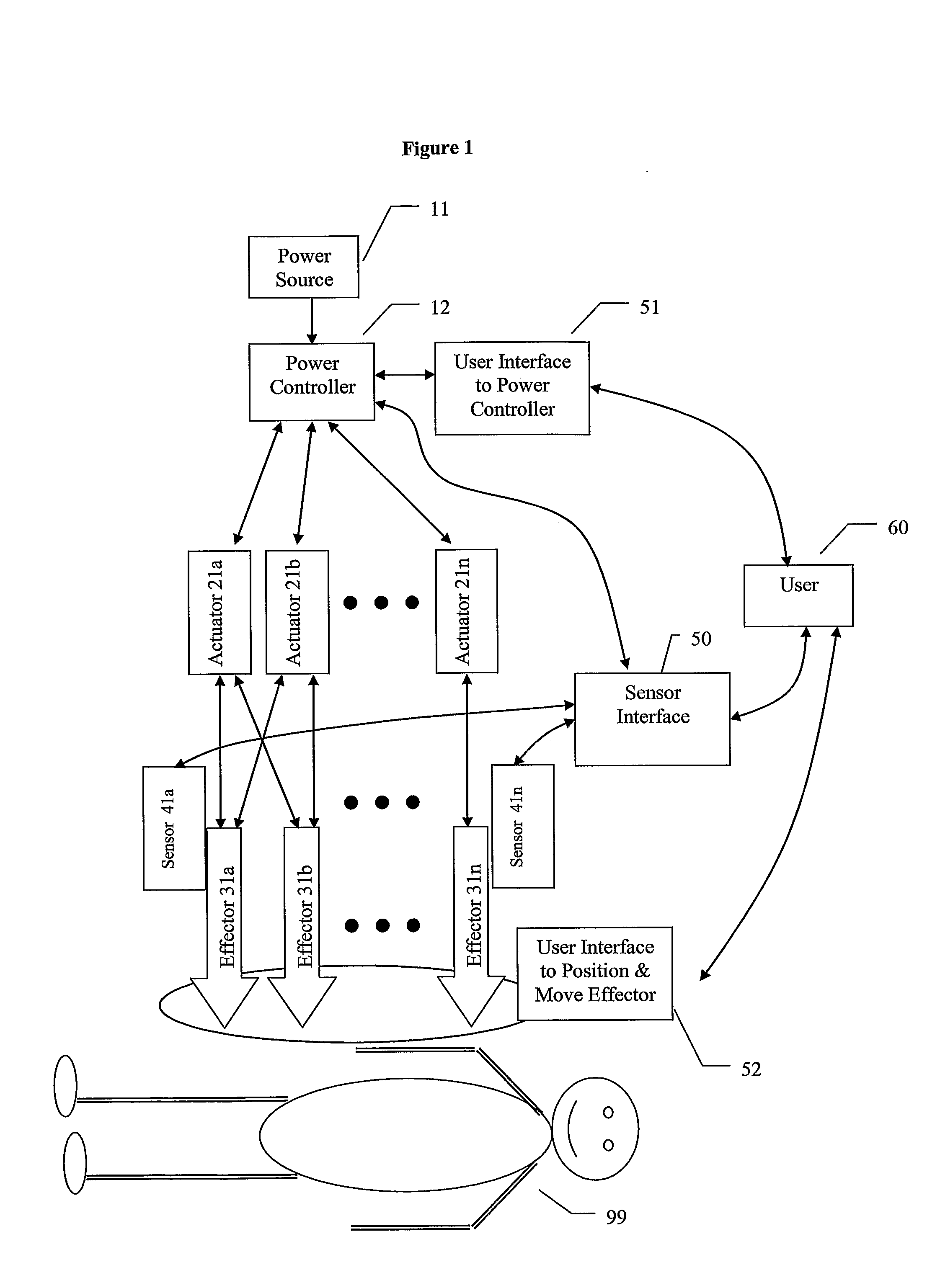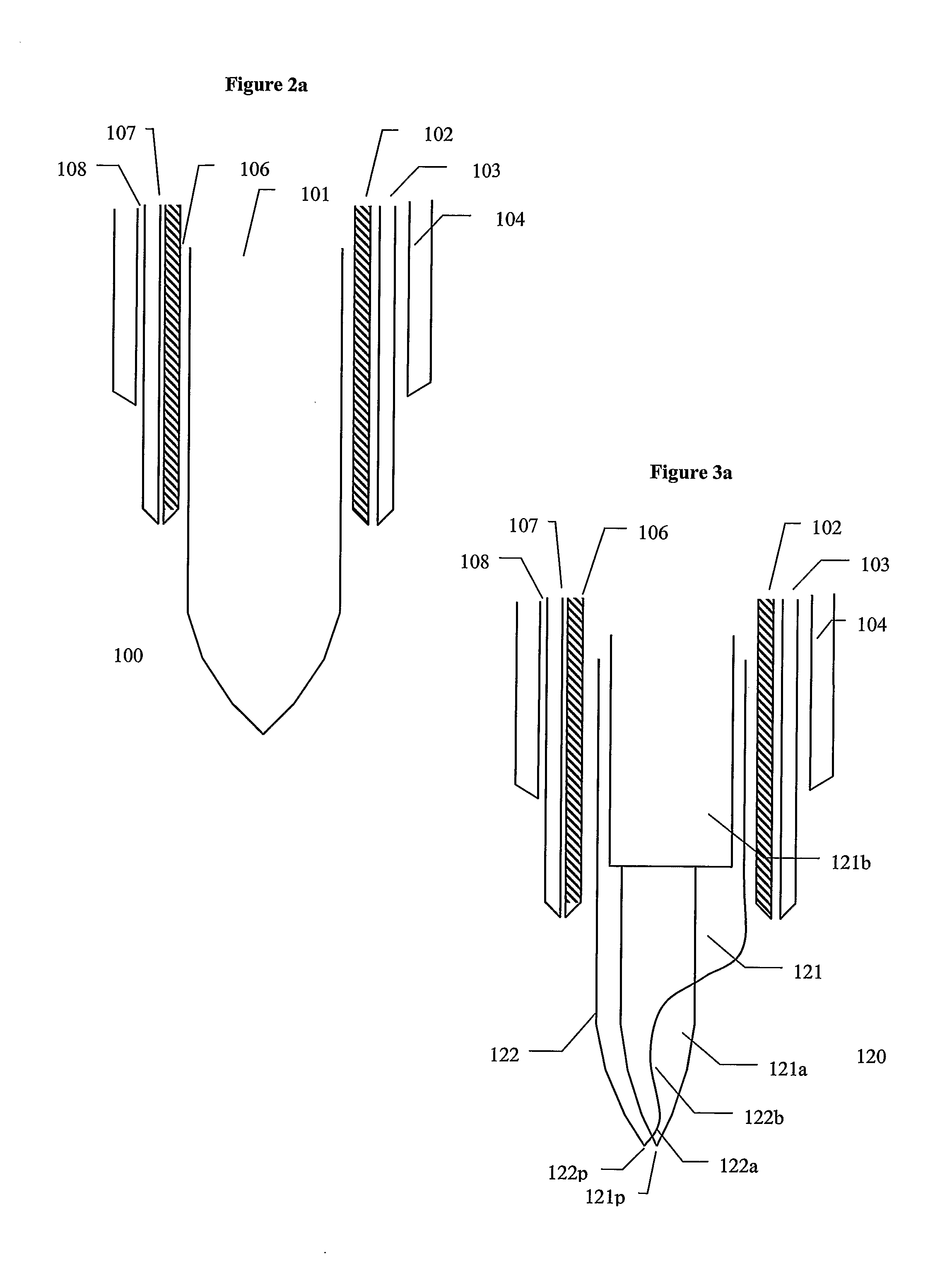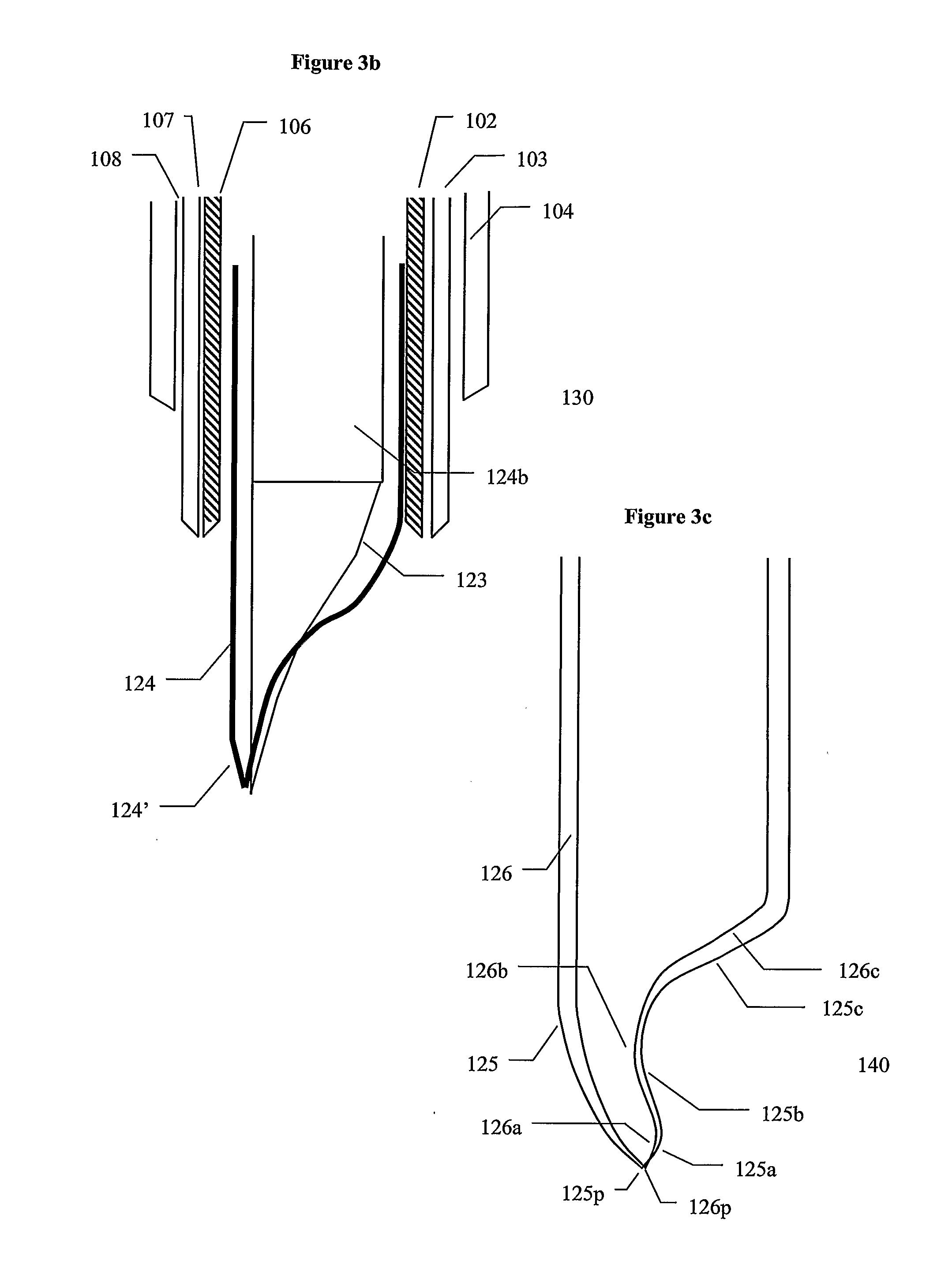[0036]In one embodiment, the surface of the first effector is a forward surface thereof. The forward surface of the first effector can be rough or
abrasive. In general, a
rough surface is marked by inequalities, ridges, or projections on the surface. The roughness or abrasiveness assists in “gripping” of tissue contacted by the surfaces so as to provide resistance to movement of the tissue relative to the forward surface.
[0041]In another aspect, the present invention provides a needle for sampling tissue including a first tubular structure and a vibrational coupler that couples
rotational energy into the first tubular structure. The
vibrational energy is suitable to penetrate tissue at the
leading edge of the first tubular structure. The device further includes a second tubular structure positioned inside the first tubular structure, such that
cut tissue passes into the second tubular structure and is protected from the effect of the
rotational energy of the first tubular structure.
[0043]In another aspect, the present invention provides a needle
system including a needle in operative connection with a
syringe and an
actuator in operative connection with the needle. The actuator is adapted to energize to the needle to assist in penetrating tissue. The needle can, for example, be connected to the
syringe by a hub, wherein the hub allows
relative motion between the needle and the
syringe. The needle and the syringe can both be energized. In one embodiment, the actuator is in operative connection with a cradle in which a needle and syringe are insertable to energize the needle.
[0046]In a further aspect, the present invention provides a device for penetrating tissue including a nonlinear penetrator. The nonlinear penetrator includes at a forward end thereof at least a first effector. The device further includes at least one actuator in operative connection with the first effector. The actuator is adapted to cause motion of the first effector. The penetrator can be curved with a curve of a predetermined shape. The curve can have a constant
radius of curvature or a varying
radius of curvature. The penetrator can be curved in a simple or a complex manner. As used herein, the term “complex” refers to a curved section that curves in more than one direction or more than one plane. In one embodiment, the penetrator is flexible. The device can further include a mechanism to direct the penetration of the penetrator.
[0049]In still a further embodiment, the present invention provides a
blunt needle including at least one effector that does not readily penetrate tissue and at least one actuator in operative connection with the effector that when energized enables or enhances the ability of the effector to penetrate tissue. The needle can contain a conduit such that fluid can be delivered to the tissue or material removed from the tissue.
[0050]In general, the energy assisted devices and systems of the present invention can be used in practically any
medical procedure requiring penetration, hole boring or incision of tissue including, for example, biopsies of both soft and hard internal tissue; removal of tissue for therapy (for example, cataract removal);
cauterization, incision (that is,
surgery), needle access to veins, arteries, or other blood vessels for
blood testing (including
small sample blood testing as, for example, practiced by diabetics) aspiration, drainage access, gastrostonomy, chemical or
RF ablation, sensor access to tissue and
drug delivery to
target tissue. Several advantages are provided over common instruments (including needles) currently used in such procedures. In general, these
advantage are afforded by at least partially decoupling the penetrating or cutting action of the devices of the present invention from the forward force applied thereto. For example, smaller needles can be used, less push force is require, less “tug” force is felt by the patient, there is less of a tendency of deflection from the desired path, a curved path can be followed, the path can be changed during
insertion, and there is less bleeding and damage to tissue. Patient pain can further be reduced with the devices of the present invention by, for example,
local injection of an
anesthetic, local affecting of nerves via applied electrical energy, local affecting of nerves via applied
vibrational energy, air exclusion and / or the tissue penetrating profile of the device.
 Login to View More
Login to View More  Login to View More
Login to View More 


